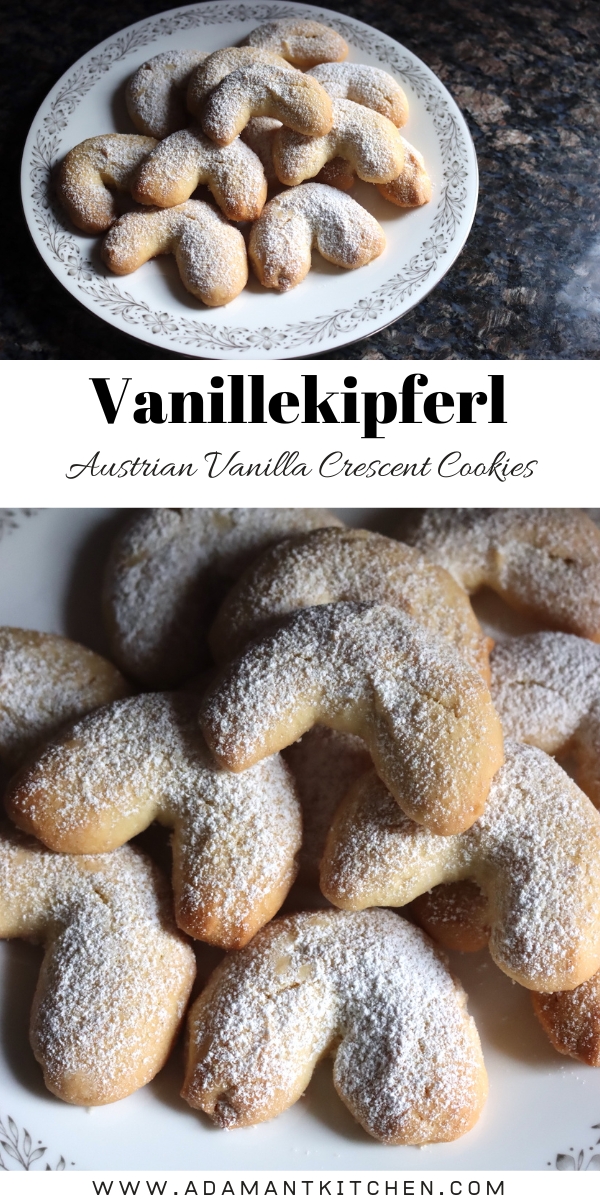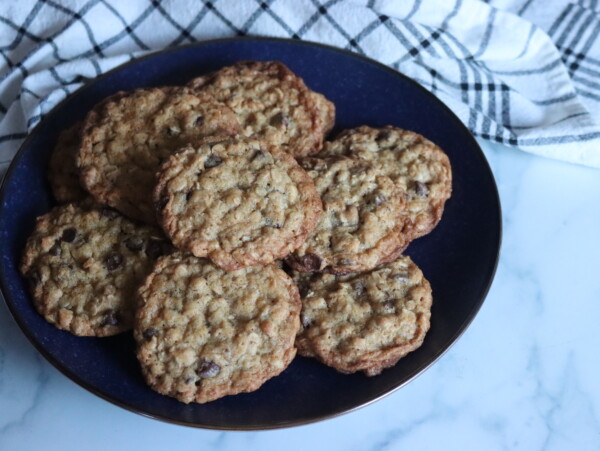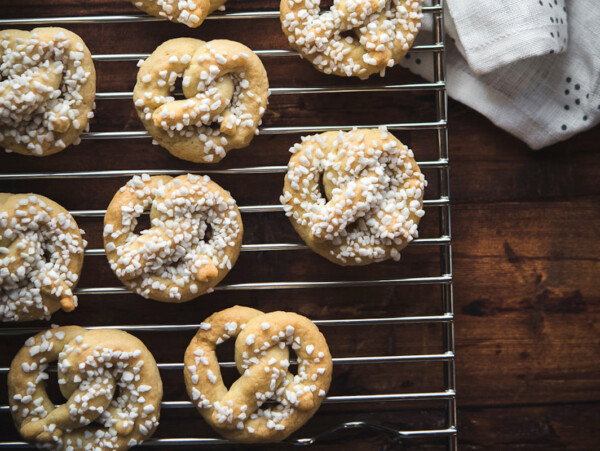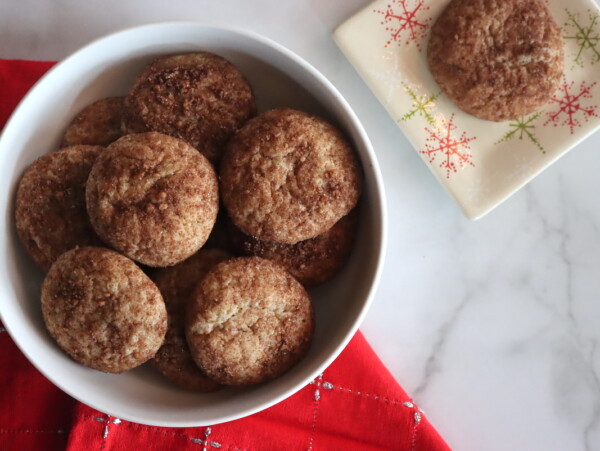This post may contain affiliate links. Please see our disclosure policy.
Vanillekipferl are a traditional German Christmas cookie with a tender, melt-in-your-mouth texture and delicate vanilla aroma. They are considered an essential part of the Christmas baking tradition.
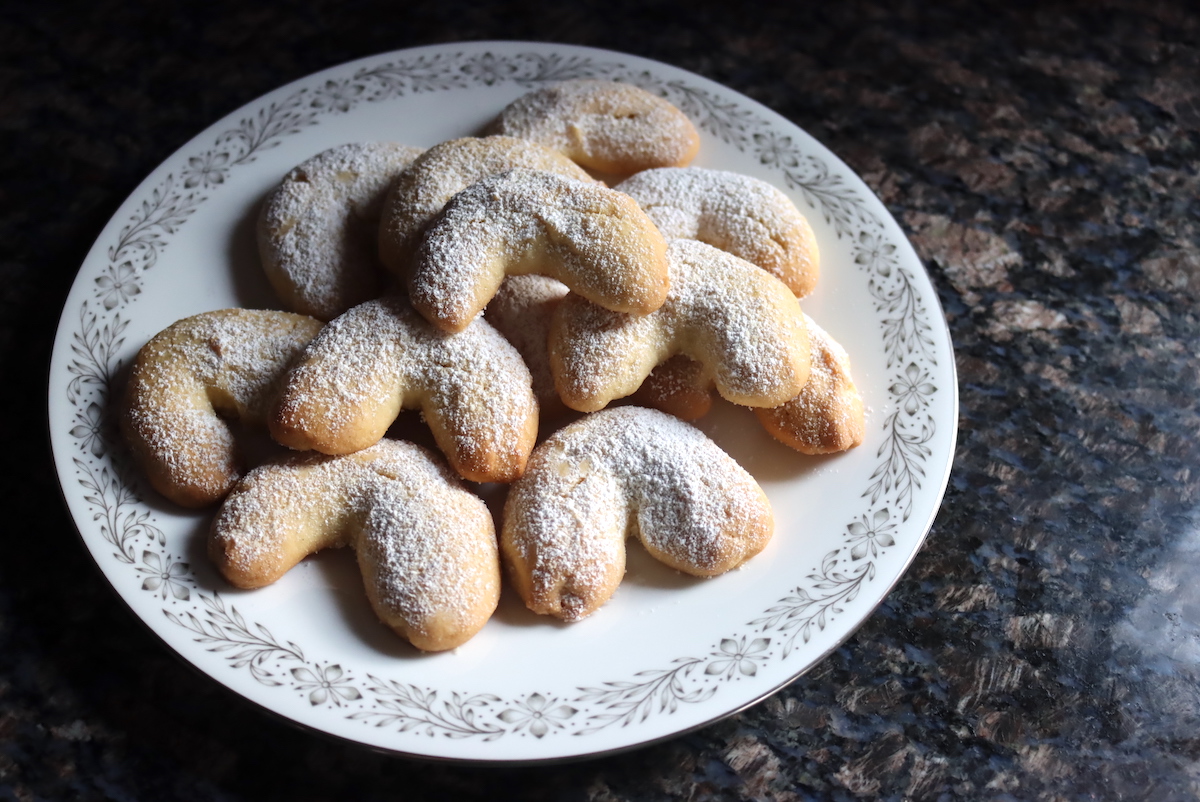
If there’s one cookie that defines Austrian holiday baking, it’s the delicate, buttery Vanillekipferl—those melt-in-your-mouth vanilla-almond crescents that are as iconic as they are delicious.
These cookies are a favorite across Central Europe, where they’re traditionally enjoyed during the holiday season.
Their flavor is subtly sweet, with a tender, sandy texture, thanks to the ground almonds and confectioners’ sugar. When you take a bite, the cookies almost disappear on your tongue, leaving behind a gentle vanilla and nutty essence.
Vanillekipferl are not just a treat—they’re a tradition. These little crescents are typically dusted in Vanillezucker (vanilla sugar), which infuses them with a beautiful vanilla aroma. While you can purchase vanilla sugar, making your own adds a more luxurious, fresh vanilla fragrance to the cookies. It’s an extra step, but it’s well worth it for the depth of flavor.
This recipe makes about 50 cookies, which sounds like a lot, but they’re usually quite small. The idea is these bite-sized cookies melt in your mouth, and provide the perfect alternative to the heavy spiced cookies and chewy macaroons that often dominate the holiday cookie scene.
In Germany, Vanillekipferl are often baked during Advent, the four-week period leading up to Christmas. This time is filled with traditions, from decorating the Christmas tree to preparing festive meals and treats. It is also common for these cookies to be given as gifts during the Christmas season, packed in decorative tins or jars and shared with friends and family.
Throughout the years, Vanillekipferl have evolved into a symbol of German Christmas celebrations, often appearing alongside other holiday favorites like Lebkuchen (gingerbread) and Plätzchen (cut-out cookies).
While regional variations abound—some using ground hazelnuts or walnuts instead of almonds—the basic recipe has remained largely unchanged. The delicate balance of buttery dough, ground nuts, and fragrant vanilla sugar has made Vanillekipferl a universally loved cookie.
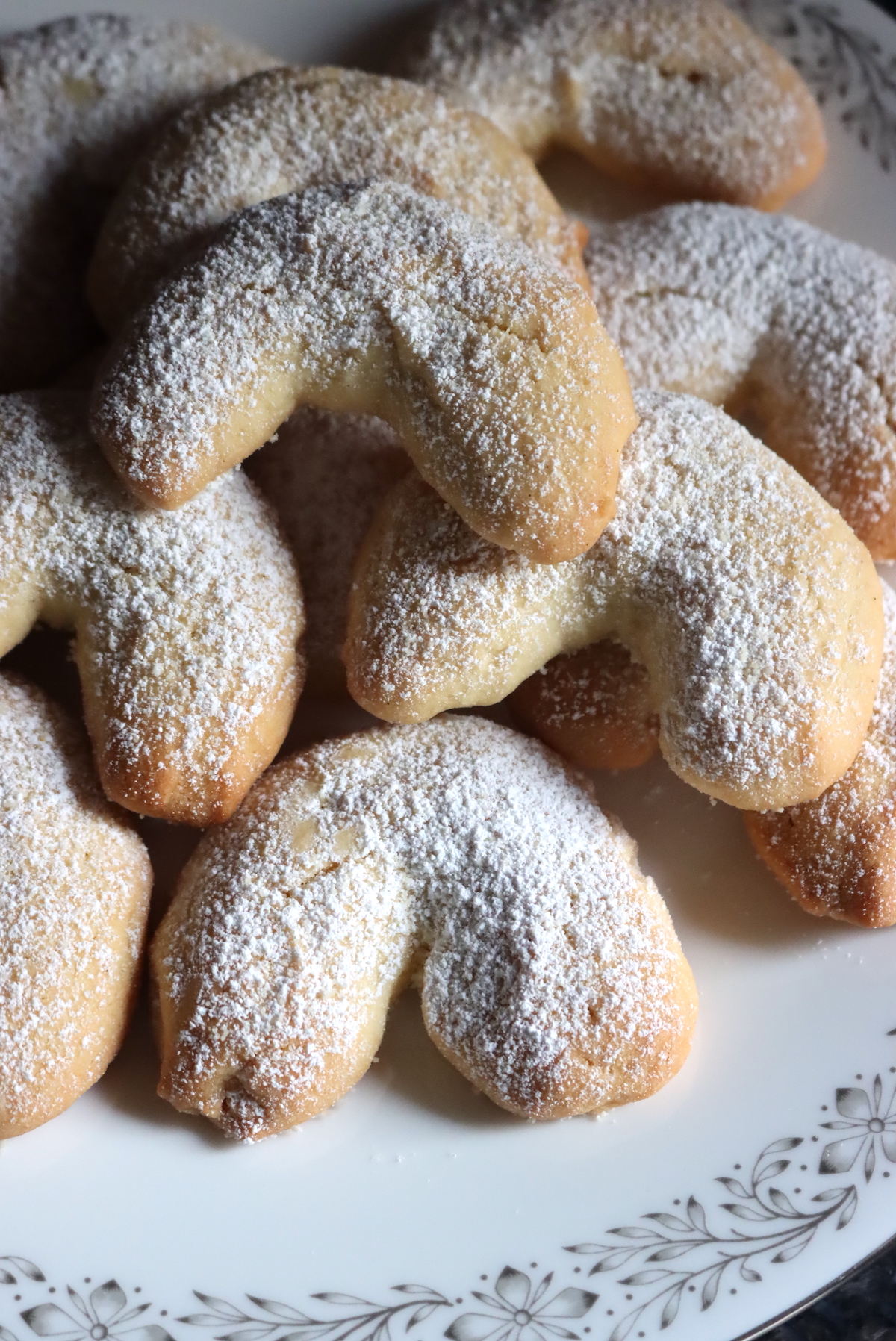
Ingredients for Vanillekipferl (Vanilla Crescent Cookies)
This recipe for Vanillekipferl is adapted from the book Classic German Baking by Luisa Weiss.
To make about 40 to 50 cookies, you’ll need:
- 1 1/4 cups (175g) all-purpose flour, scooped and leveled
- 1/2 cup (120g) unsalted, high-fat European-style butter, at room temperature
- 1 1/2 cups plus 2 tablespoons (200g) confectioners’ sugar, divided
- 2 tablespoons Vanillezucker (vanilla sugar), divided (recipe below)
- 1 cup (100g) very finely ground blanched almonds or almond flour
- 1 egg yolk
- Pinch of salt
In the US, we have almond flour readily available, and it works wonderfully in these cookies. They’re also often made with finely ground walnuts or hazelnuts, so if you’re grinding your own, you can take your pick.
Vanilla Sugar (or Vanillezucker in German) is a staple in European kitchens, but it’s mostly unknown in the US. There are actually import restrictions in the European Union around liquid vanilla extract, so they don’t have the extract we use here in the US, either.
If you want to purchase vanilla sugar, you can find it in packets online, all imported from Europe.
In the US, we have something a bit similar, called vanilla powder, made by Nielsen Massey, a maker of fine Vanilla extracts. It’s used for making homemade hot cacao powders and other things where you wouldn’t want liquid in the mix. It works well in place of Vanilla sugar, with an even better vanilla flavor.
Or, you can make it yourself. You only need a few tablespoons of Vanilla sugar for this recipe, but once you make a batch, it lasts forever.
Then you can make whatever European cookies you like!
Ingredients for Vanilla Sugar (Vanillezucker)
- 2 cups (400g) granulated sugar
- 1 whole vanilla bean
Place the sugar and vanilla bean in a food processor and process until smooth. The whole bean will turn into tiny flecks, and the sugar will powder. The result should look a bit like powdered sugar with vanilla flecks.
You can use it immediately, but it’s best left to infuse a few days for the best flavor. Once you make it, it lasts pretty much forever.
How to Make Vanillekipferl
Place the flour, butter, 1/4 cup (50g) of the confectioners’ sugar, 1 tablespoon of the Vanillezucker, ground almonds, egg yolk, and salt into the bowl of a stand mixer fitted with the flat beater attachment.
Beat on low to combine, then increase speed until the dough comes together into a smooth ball. Start slowly so the flour doesn’t fly everywhere!
Divide the dough into 3 equal portions. Roll each portion into a 1-inch (2.5cm) thick cylinder.
Wrap each roll in plastic wrap and refrigerate for at least 1 hour or up to 24 hours. This helps the dough firm up, making it easier to shape.
Preheat your oven to 325°F (165°C) and line two baking sheets with parchment paper.
Remove one dough roll from the refrigerator. Cut it into 1/2-inch (1.25cm) slices.
Roll each slice into a log about 2 inches (5cm) long, with slightly tapered ends. Gently bend the dough into a crescent shape.
Place the shaped cookies on the prepared baking sheets, leaving about 1 inch (2.5cm) between each one.
Repeat with the remaining dough.
Bake for 10 to 15 minutes, or until the cookies are just lightly browned on the edges. Don’t let them over-bake; they should remain soft.
Remove from the oven and let the cookies cool for just a minute or two.
While the cookies are still warm (but not hot), dredge them carefully in a mixture of the remaining 1 1/4 cups (150g) confectioners’ sugar and 1 tablespoon of Vanillezucker.
Gently place the dusted cookies on a wire rack to cool completely. Handle with care, as these cookies are very delicate!
Once fully cooled, store the cookies in an airtight container. Vanillekipferl will stay fresh for up to 3 weeks.
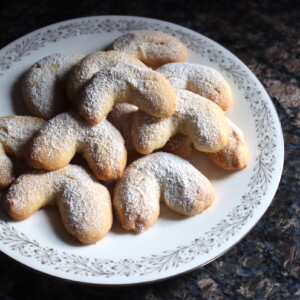
Vanillekipferl (Austrian Vanilla Crescent Cookies)
Ingredients
- 1 1/4 cups 175g all-purpose flour
- 1/2 cup 120g unsalted butter, room temperature
- 1 1/2 cups + 2 tbsp, 200g confectioners' sugar, divided
- 2 tbsp Vanilla Sugar, Vanillezucker, see notes
- 1 cup 100g ground almonds or almond meal
- 1 egg yolk
- Pinch of salt
Instructions
- In a stand mixer, combine flour, butter, 1/4 cup of sugar, 1 tbsp of vanilla sugar, ground almonds, egg yolk, and salt. Beat until smooth.
- Divide dough into 3 portions, roll into cylinders, wrap in plastic, and refrigerate for at least one hour (or up to 48 hours).
- Preheat the oven to 325°F (165°C). Line baking sheets with parchment paper.
- Slice dough into 1/2-inch pieces, roll each into 2-inch logs, taper the ends, and form crescents. Place on baking sheets.
- Bake for 10-15 minutes until lightly browned at the edges. Let cool for 1-2 minutes.
- Mix the remaining confectioners' sugar and vanilla sugar. Gently dredge warm cookies in the sugar and place them on a rack to cool.
- Store in an airtight container for up to 3 weeks.
Notes
How to Make Vanillezucker (Vanilla Sugar)
Vanillezucker (vanilla sugar) is an essential ingredient in many European pastries, and making your own is easy. This is more than you need for this recipe, but it’s hard to make a smaller batch, and you can use it in other European cookies.Ingredients for Vanilla Sugar (Vanillezucker)
- 2 cups (400g) granulated sugar
- 1 vanilla bean (or 1 tablespoon vanilla extract)
Instructions
- Cut the vanilla bean into quarters and place it in the bowl of a food processor with the sugar.
- Process until the vanilla bean is finely ground and the sugar is speckled with the tiny vanilla bits. The sugar should become powdery.
- Transfer to an airtight container and store indefinitely. The longer it sits, the more fragrant it becomes!
European Christmas Cookies
Looking for more European Holiday Inspiration? I have a list with more than 50 Christmas Cookies from around the world, but here are some of my favorites:
- Danish Sugar Pretzels (Sukkerkringler)
- Norwegian Butter Cookies (Serinakaker)
- Danish butter cookies (Vaniljekranse)
- Finnish Teaspoon Cookies (Lusikkaleivät)
